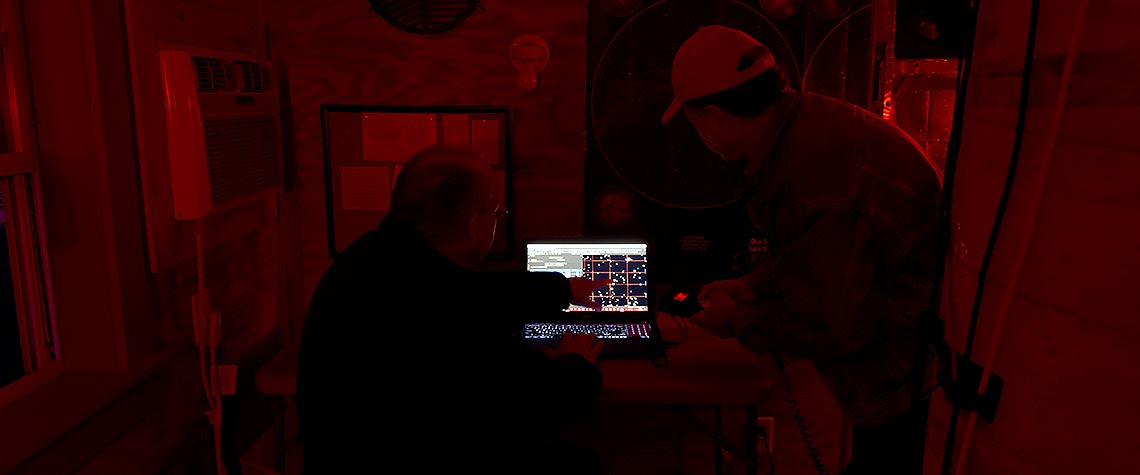Page 4

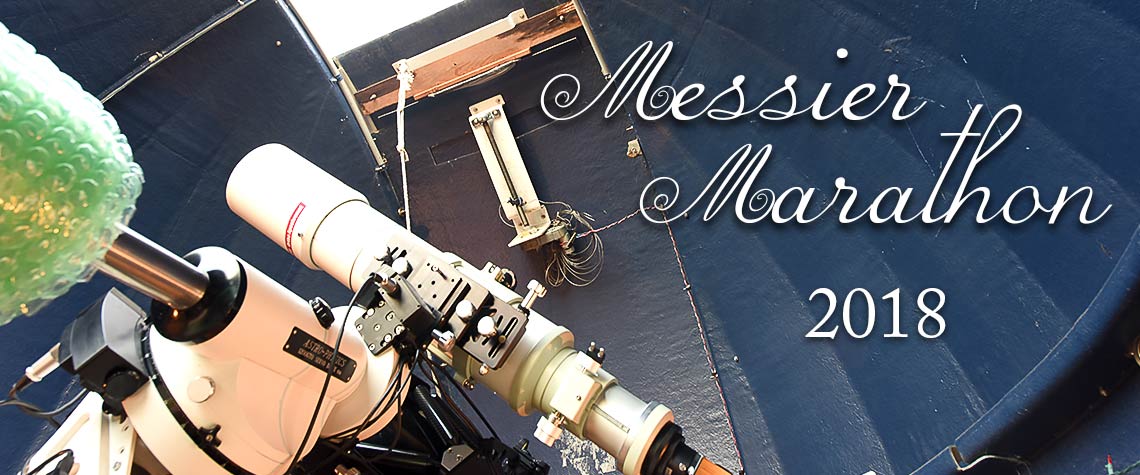
Messier Marathon - 2018
By Ginger Wentrcek
The Brazos Valley Astronomy Club held a Messier Marathon on Tuesday, March 13, 2018. Mark Spearman, owner of Regina Caelorum Observatory, once again volunteered the use of his beautiful rural property, observatory, and warming room.
The event was originally scheduled for Saturday, March 17, but weather predictions for cloudy skies and thunderstorms ruled out the weekend gathering, and the marathon had to be moved to the middle of the week.
The temperature was perfect when participants started arriving for the event but started dropping as the evening progressed, and extra layers of clothing were required. Although intermittent clouds rolled in and out during the night, and seeing and transparency were not optimal, most of the Messier objects were observable. Some of the objects were extremely faint and fuzzy but still identifiable, while others, like the mighty Orion Nebula and various star clusters, still presented themselves in glorious wonder.
Members who attended the marathon were Mark Spearman, Tim Cowden, Randy Light, Warren Bracewell, Mitchell Barry, David Barry, and Ginger Wentrcek.
Reports from Members
Tim Cowden:
This was more of a good field test of my home made 16 inch Dob than a serious effort. The telescope worked fine, and I was pleased to find 50 objects, a fair amount from memory.
Randy Light:
I photographed 106 of 110 objects using my Astrotech AT10RCT telescope and Mark's AP 1200 Goto mount. Mark provided encouragement and dome rotation for part of the night. Passing clouds and an airplane joined the marathon. Thumbnails of the images I captured can be seen and downloaded here.
Warren Bracewell:
The evening started with clear skies with a few clouds to the west. We were able to get good views of Venus and Mercury before dark. By the time dark arrived, a haze was forming in the West. I could not find M74 or M77, so I went on with the others in the low west before they clouded over. I was able to grab quite a few of the evening and late night Messiers, but should have turned my attention to Scorpio before 4:00AM because clouds were forming in the south. I did take some time to look at Jupiter. I had a good view of the rings. I then turned my attention to the north, hoping the clouds would clear. By 4:30, all of my equipment was fogged up and I was done for the night. All in all, it was a good night with 68 captures.
Mitchell Barry:
Telescope: I used a Skywatcher 8" Dobsonian Telescope with a Celestron 8 - 24mm Zoom Eyepiece and a Orion Q70 38mm Wide Angle Eyepiece. I also used a pair of Celestron SkyMaster Giant 15x70 Binoculars mounted on a homemade parallelogram mount and a 9X50 finder-scope.
Number (or approximate number) of items observed: 104 (including M74) observed.
Comments: The night started off with a small amount of cloud cover in the west, blocking M74, M77, and M33 from view. After several attempts, I managed to track down M77 and what I’m pretty sure was M74. I never could find M33. The night cleared out, and I had no trouble catching up to the horizon by about 1:00 a.m. I saw nothing new from 1:00 to 2:00, but from 2:00 to 4:00, I only managed to track down eight more objects. At 4:00, Sagittarius and Scorpius had risen enough to track down some new objects. By 4:38, I had tracked down 21 new objects and caught up with the horizon/treeline again. At about this time, the dew began to set in, and almost all of my equipment failed simultaneously. My binoculars,finderscope, and telrad were all beginning to accumulate dew. My inclinometer started reading "error," and the needle for my azimuth setting circle would no longer stick. Above all, at this time there was a definitive line about 10 degrees above the horizon. Below this line were all of the objects I needed to find, as well as ZERO naked eye stars. After some trial and error, and some time with a hairdryer, I barely managed to find another 5 objects before my dad, who had been sleeping in the car, had to leave for work. I think I could have made it to 108 if I didn't have to leave (and if all my equipment still worked).
All in all, it was definitely not the best night for observing. I don't even remember seeing the Milky Way, and there were constantly bright clouds over College Station. Good thing none of the objects were too far south. But, it was easily good enough to break 100!
Ginger Wentrcek:
I enjoyed observing with Tim and Randy and learned from each of them. Open clusters were especially bright in Tim's telescope, and his ability to find Messier objects from memory was impressive. Randy was on a mission to photograph as many Messier objects as possible but still took time to discuss Backyard Nikon and procedures for imaging. I had been reading about Algol and was surprised to see it, although dim and fuzzy, with the unaided eye when Mark pointed it out to me.
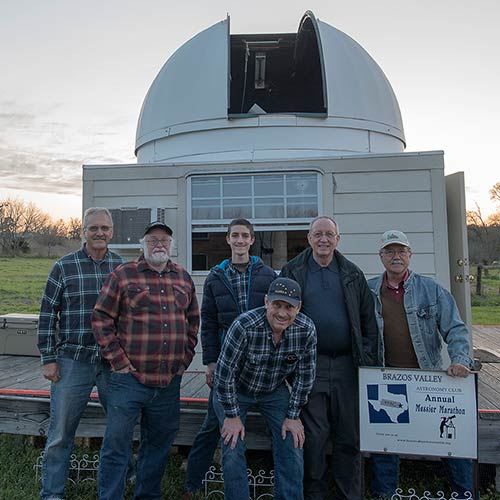
BVAC Messier Marathon Participants


Tim Cowden

Randy Light
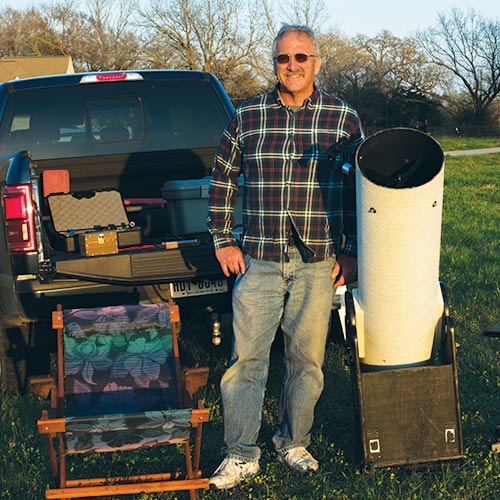
Warren Bracewell
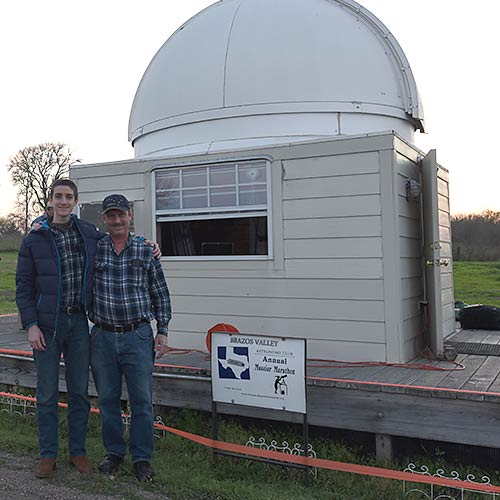
Mitchell and David Barry
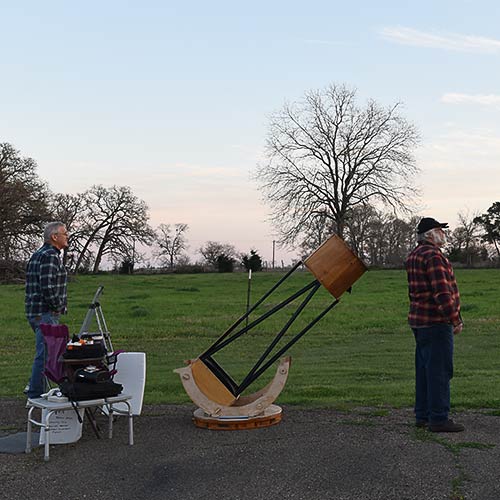
Waiting for first star
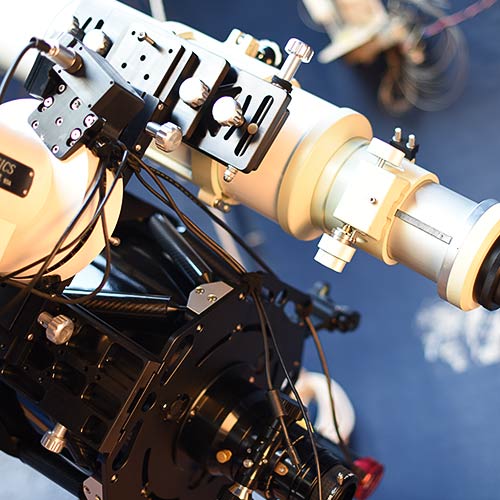
Ready for viewing and imaging
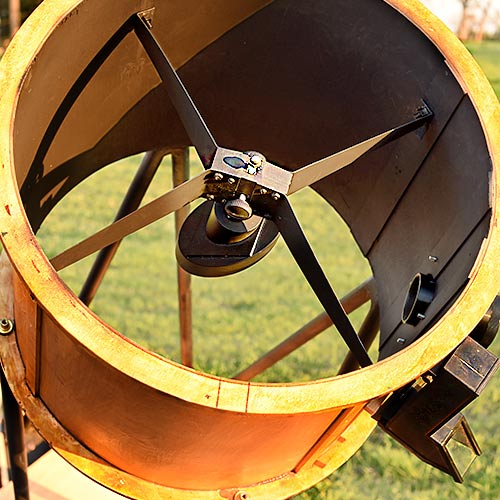
Tim's 16 inch Dob
